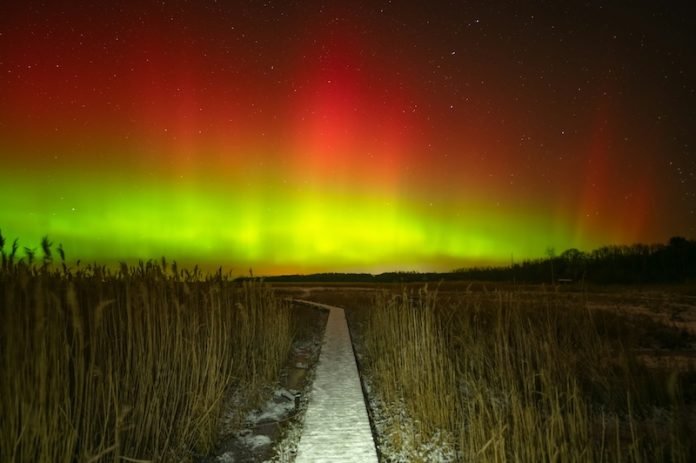
In the far north of Finland, people are treated to one of nature’s most spectacular shows: the Northern Lights, or aurora borealis.
These aren’t just beautiful to look at; they also have a big impact on the weather, particularly in the winter. A team of scientists from the University of Oulu in Finland has been looking into this and found some fascinating results.
First, let’s talk about what the Northern Lights are. When particles from space hit the Earth’s atmosphere, they light up, creating stunning colors in the sky.
But there’s more to it than just a light show. These particles also cause changes high above us in the atmosphere, which can lead to less ozone. Ozone is important because it helps protect us from the sun’s harmful rays.
These changes caused by the Northern Lights have a domino effect on the polar vortex. The polar vortex is a huge wind pattern that circles around the North Pole. When the vortex is strong, it keeps the cold air locked up in the Arctic.
This leads to milder winters in places like northern Europe and Finland. But when the Northern Lights are weak, the polar vortex can get weaker too. This allows cold air from the Arctic to move southward, making winters much colder.
Associate Professor Timo Asikainen from the University of Oulu explains that the polar vortex can even break apart, which is when Finland and northern Europe get hit with really cold weather.
The team at the University of Oulu has developed models that can predict these changes months in advance, which is pretty impressive.
Now, why does this matter? In Finland, how much electricity people use, especially for heating, depends a lot on the weather.
If it’s colder, they need more heat, which means using more electricity. So, the scientists wanted to know if the Northern Lights could affect how much electricity Finland uses in the winter.
They did a study and found that indeed, the Northern Lights have a big effect on Finland’s winter temperatures and, therefore, on how much electricity people use.
When there’s a lot of activity from the Northern Lights, winters are milder, and less electricity is used for heating. When there’s less activity, it’s the opposite.
This finding is pretty significant. It means that by keeping an eye on the Northern Lights and understanding their patterns, we might be able to predict how cold the winter will be and how much electricity will be needed.
This could be really helpful for planning and could even save money.
Interestingly, this effect is most noticeable when certain winds high up in the atmosphere, called QBO winds, blow from the east. These winds help carry the changes caused by the Northern Lights down into our weather.
This study opens up new possibilities for predicting winter weather and electricity needs. It’s a great example of how something as beautiful and natural as the Northern Lights can have practical effects on our daily lives.
It’s also a reminder of how interconnected our planet is, from the depths of space to the electricity bill in your mailbox.
The research findings can be found in Scientific Reports.
Copyright © 2024 Knowridge Science Report. All rights reserved.



